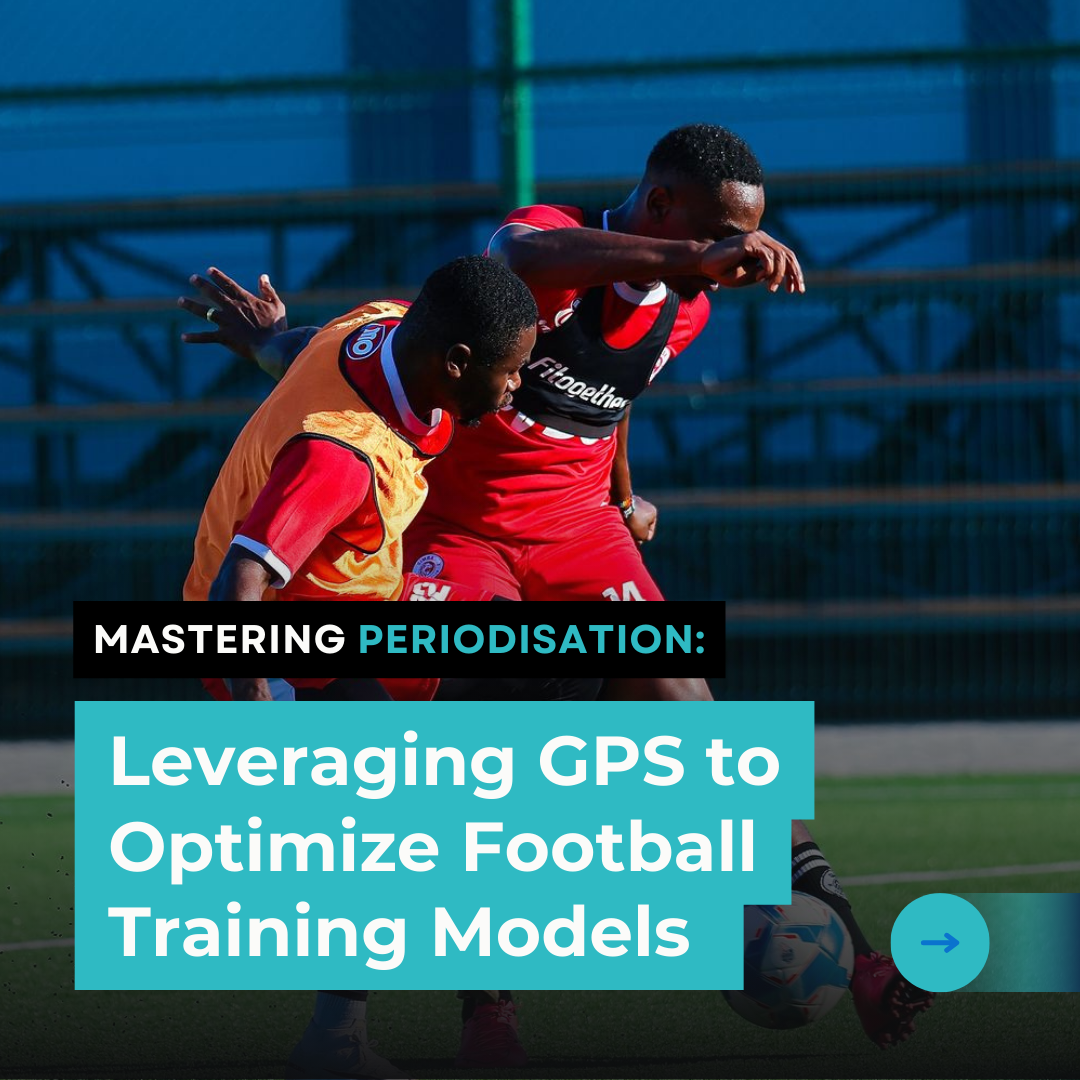The Essential of Sprint for Injury Prevention
Improving Performance and Minimizing Injury
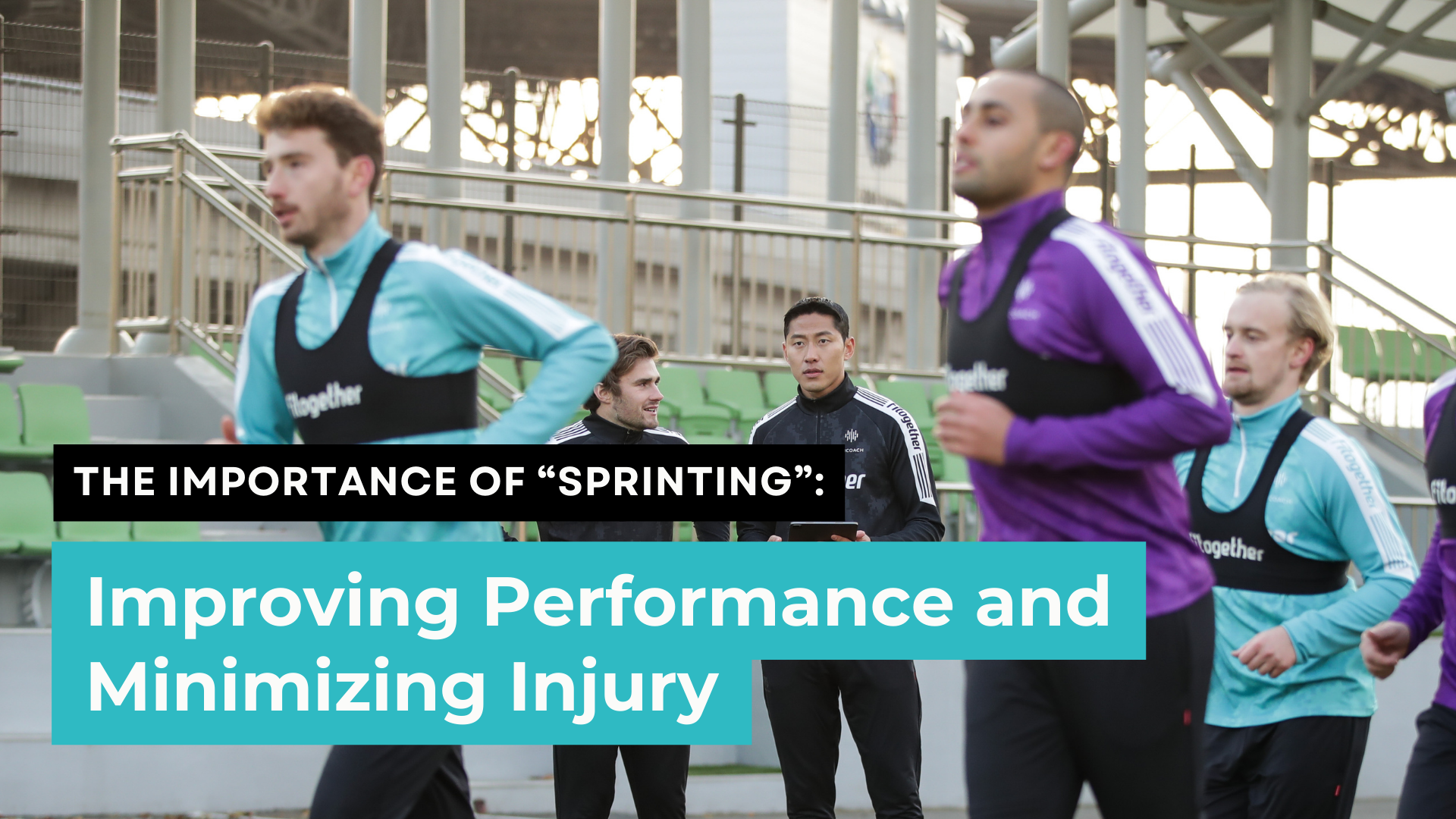
Welcome (back!) to Fitogether Vision & Insights – your trusted destination for cutting-edge insights into sports science and technology! Each week, we curate a blend of sports wisdom and knowledge just for you.
In this episode, our Sports Scientist delves into the essential role of sprinting in football; and how it not only boosts player performance but also plays a crucial part in reducing injuries on the field!
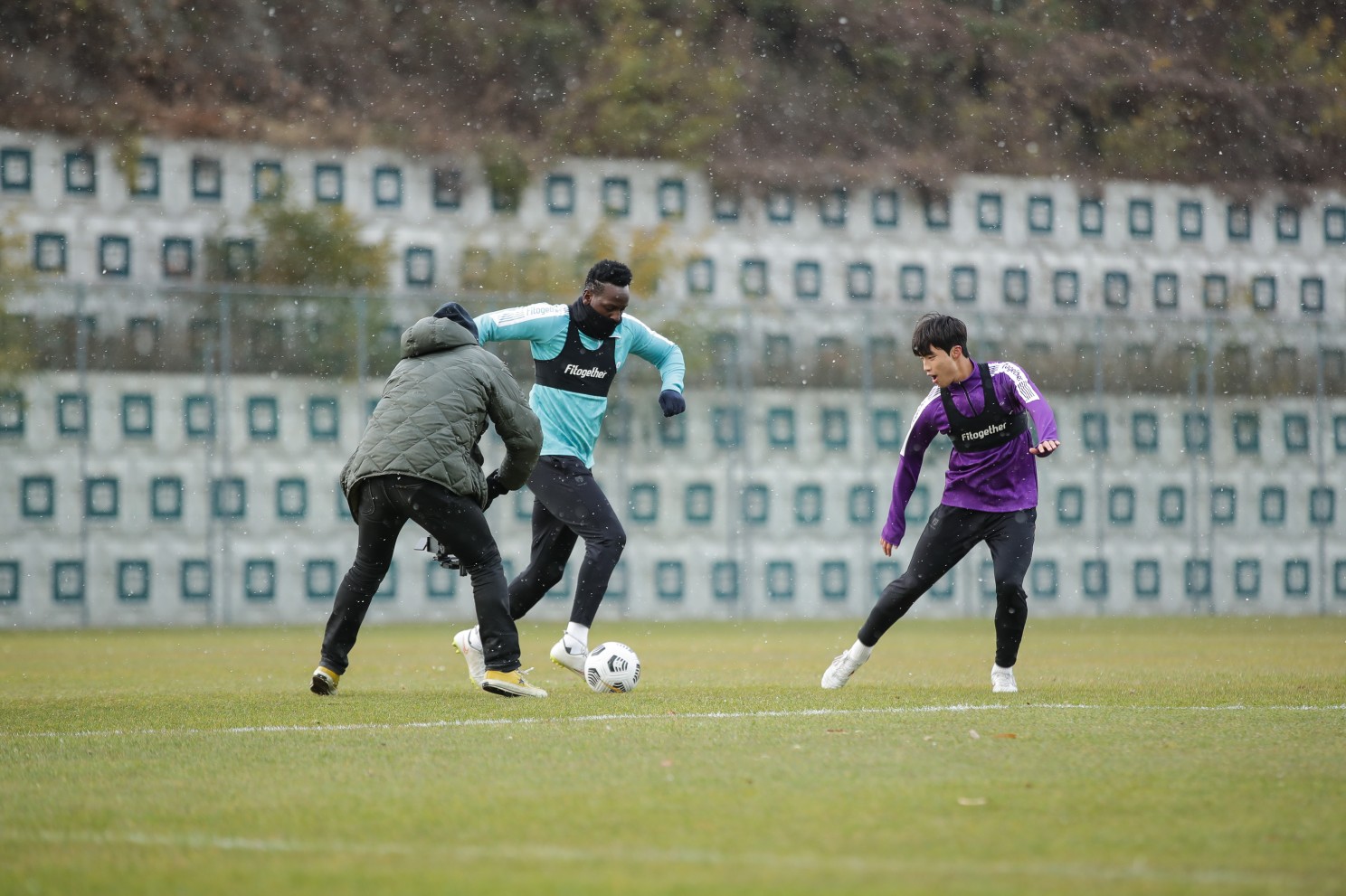
Picture this: You’re a sprinter, poised at the 100m start line, only to realize you've never hit your max speed in training before. It’s not a viable situation, is it? Just as you wouldn't expect a sprinter to skip practice leading up to a race, why would you expect a football player to neglect sprint training?
It’s quite a common thing that can be easily overlooked in team sports, especially football. With GPS tracking, monitoring players' sprint speeds, number of sprints (usually when a player breaks the threshold of 25.2kph), and sprint distance has become crucial (distance above 25.2kph). Not only does it improve performance, but it also reduces the risk of injuries.
As football becomes faster-paced at the elite level, players are expected to be superior athletes. Sprinting is key for quick reactions, securing the ball, making tackles, and applying pressure. Sprinting in training serves two purposes: improving performance and minimizing injuries. Recognizing this importance, many teams incorporate sprint coaches into player development. For instance, Jonas Dodoo's team at Speedworks has been at the forefront of this approach.
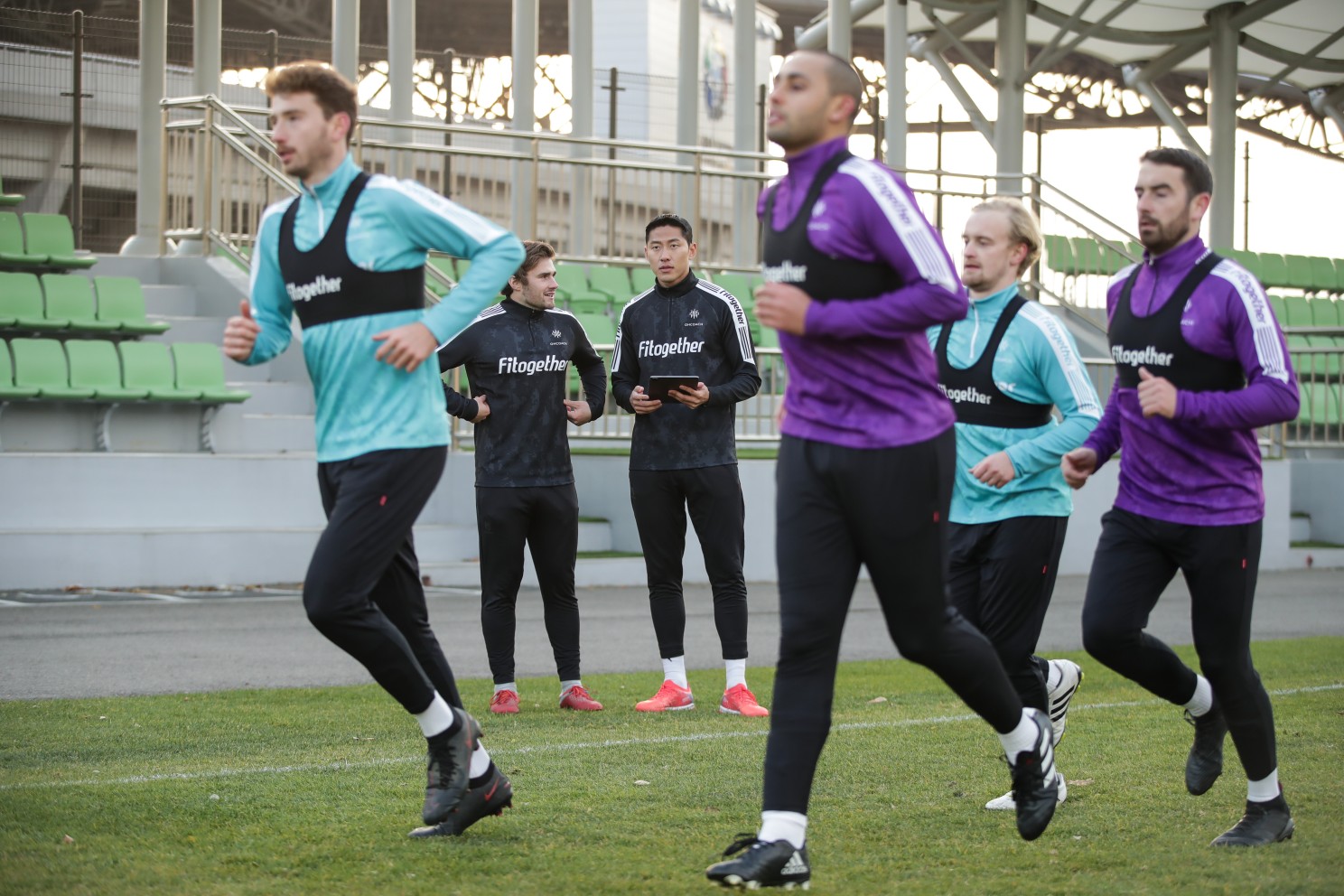
In this blog, let’s highlight the importance of sprint training in improving performance and reducing the risk of injuries:
Increase in Performance
Increasing top speed means more agility during crucial moments. It also enhances your top speed—means you are able to become more efficient at lower speeds which saves energy for the later stages of the game.
Reduction in Injury
Scheduled sprint sessions in training (at 90-95% max speed, 1-2 times a week) have been shown to decrease the risk of unexpected injuries, particularly hamstring strain!
However, pushing players to sprint in training requires cooperation with coaching staff. Some coaches like to have complete control of the training, so dedicating a period once or twice a week to the sessions is something you may not be able to do.
Using templates like the one below, you can track players' progress in sprint distances and ensure they meet suggested sprint speed targets:
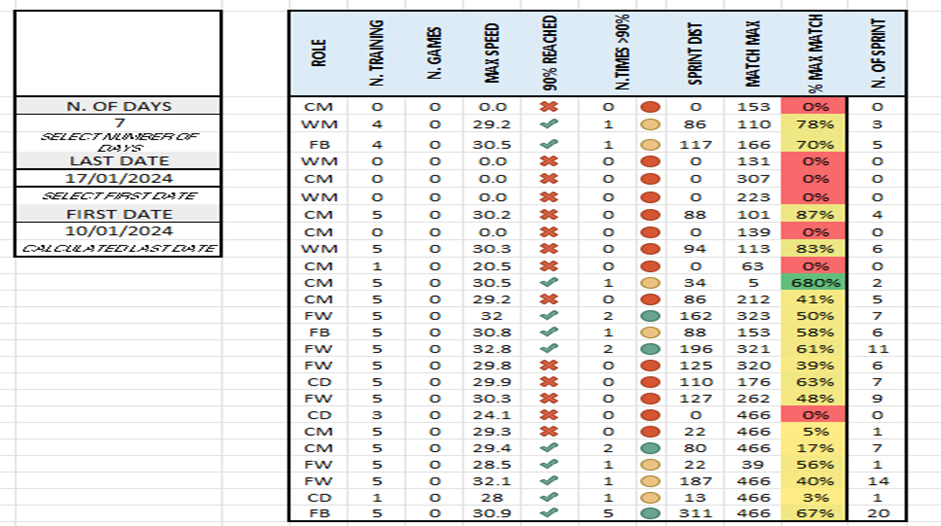
Above, you'll find an example template for tracking player progress over a one-week period, measuring their sprint distances against game metrics and ensuring they meet suggested sprint speed targets. Building reports like these offers a detailed insight into players' performance, rather than relying on a one-size-fits-all approach. Additionally, it's essential to track when players last achieved 90-95% of their maximum speed. If players go over seven days without sprinting, it's crucial to identify an appropriate time to integrate sprint training.
As a practitioner, your skill lies in understanding your training week and identifying windows of opportunity for sprint exposure. While most players naturally hit high speeds during games due to competitiveness, replicating this intensity in training is key. Educating players on the importance of sprinting and encouraging maximum effort during specific training segments can help prevent injuries, particularly hamstring strains, which account for 57% of sprint-related injuries at the top level.
Oh, and the performance side is also quite important… Just as athletes at the 100m starting line sprint to get faster, football players need to hone their speed. Some athletes may have biomechanical limitations, while others require additional training to take their speeds to another level. Positions on the pitch are crucial too; full backs and wingers typically sprint the most in games, so it's important not to overload or underload them with sprint training. But, honestly, its important for all players at the top level to sprint—regardless of position. It’s just a little bit more important to focus on those who do it more!
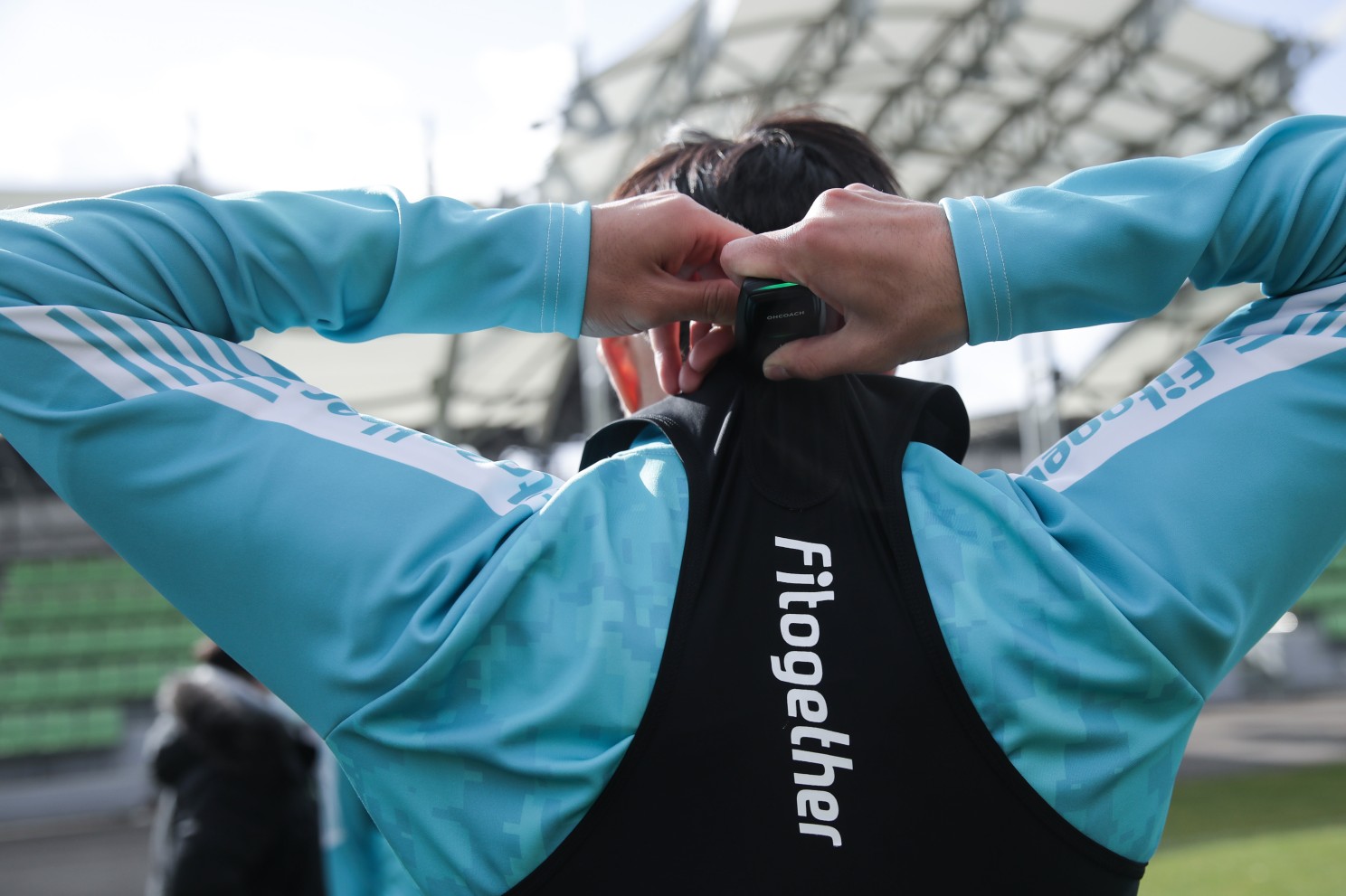
Now, let's explore how you can use OHCOACH cell to enhance performance and reduce injuries in your squad…
With its increased accuracy, the Fitogether cell becomes a powerful tool in your arsenal.
- First, identify each player's maximum speed as a baseline for monitoring sprint performance. While players may reach near-maximum speeds in specific training sessions, it's essential to conduct maximum speed tests.
- Monitor progress using the OHCOACH live system in real-time, setting maximum speed profiles for each player.
- Analyze sessions and games to determine what percentage of their maximum speed players achieve, updating their profiles as needed.
-
Discover how our innovative system helps you monitor sprinting performance, identify progress, and mitigate injury risks effectively. Schedule an introductory call with our team to explore how OHCOACH can transform your training and elevate your team's performance to new heights.
In conclusion, the choice is clear: sprint and risk a little, or abstain and risk even more.
Embracing the importance of sprinting in football isn't just a performance enhancer; it's a game-changer.
.png)

